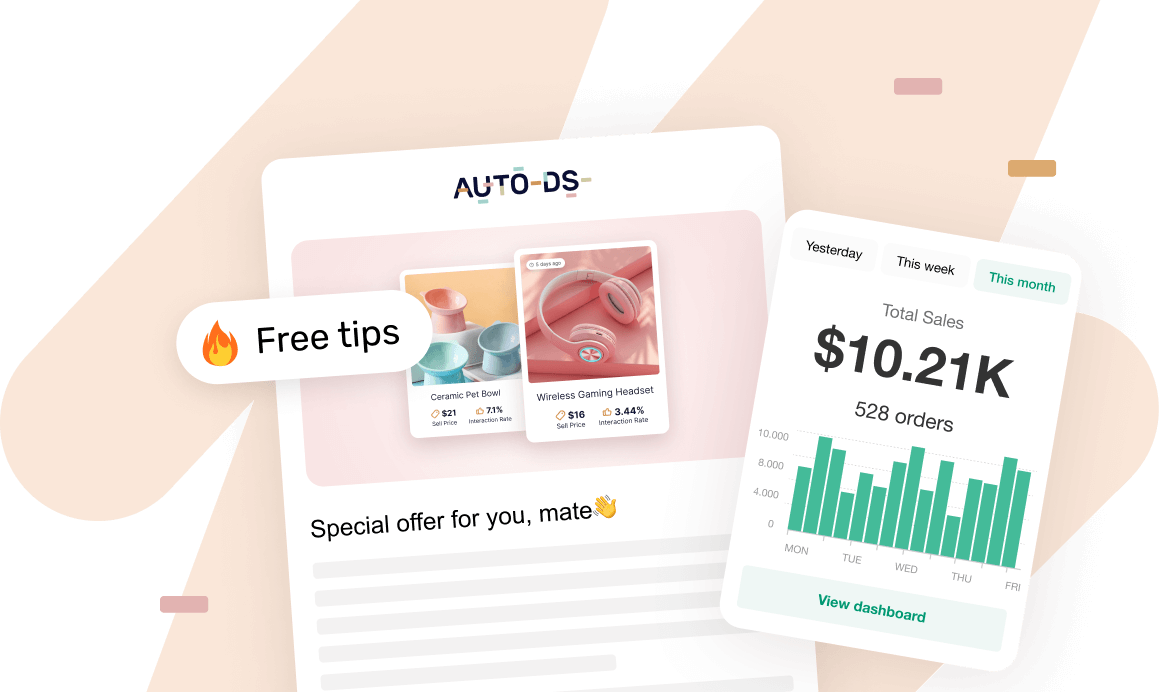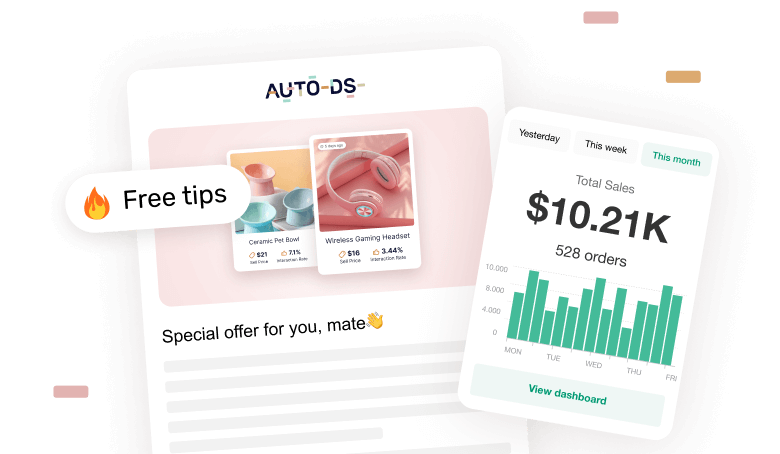Many new sellers starting in eCommerce often face the same dilemma: “Should I go for dropshipping or wholesale?”
Sourcing can make or break your business, and that’s exactly where these two models differ. Some entrepreneurs thrive with wholesale because they control inventory and enjoy bigger margins. Others prefer dropshipping for its low-risk, flexible approach. And if you choose dropshipping, tools like AutoDS can make your life much easier by automating pricing, stock management, and order fulfillment, so your workflow stays smooth and stress-free.
In this guide, you’ll get a clear, side-by-side breakdown of dropshipping vs wholesale. From start-up costs to quality control, we’ll cover everything so by the end, you’ll know which model fits your goals and how to kickstart your store without guesswork.
Dropshipping lets you sell products without holding inventory, while wholesale requires buying in bulk and managing stock.
Startup capital differs, with dropshipping needing low upfront investment and wholesale requiring more funds for inventory.
Product quality and fulfillment are handled differently, with wholesale offering more control and dropshipping relying on suppliers.
Automation tools like AutoDS give dropshippers an edge by managing pricing, inventory, and order fulfillment efficiently.
Choosing the right model depends on your goals, risk tolerance, and resources, and some sellers combine both approaches.
How Do Wholesale and Dropshipping Work?
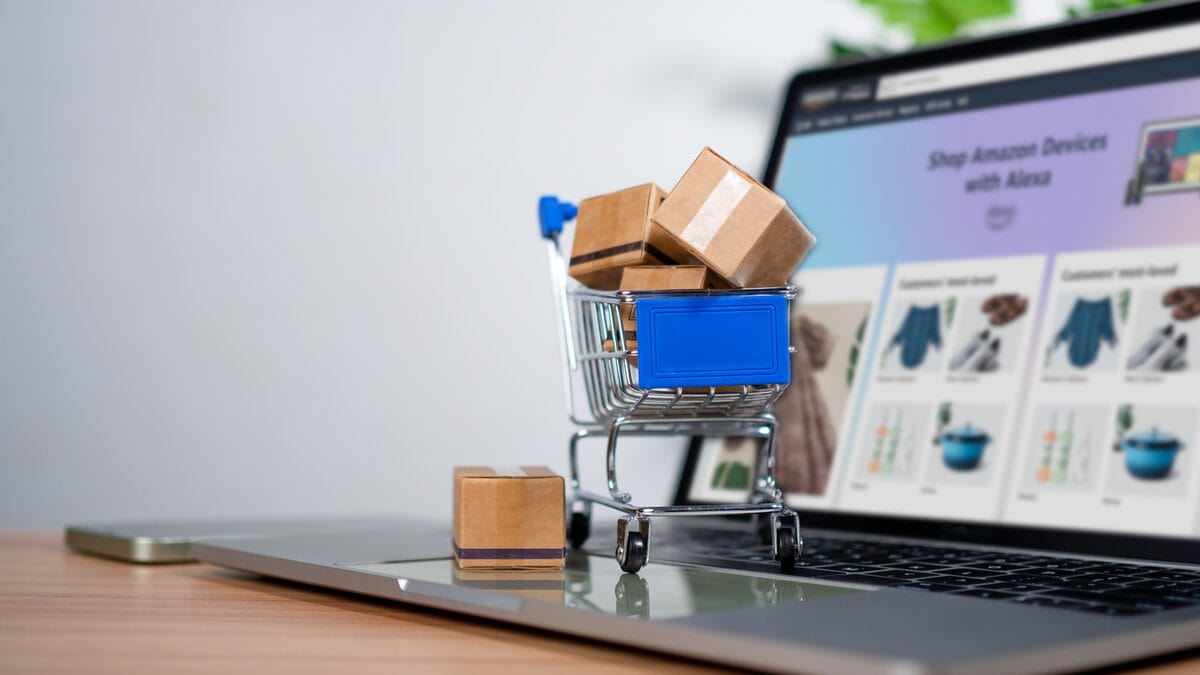
Before diving into the pros and cons, let’s make sure we’re on the same page about how each model works.
Wholesale means buying products in bulk directly from a manufacturer or distributor, then reselling them at a higher price. You handle inventory, store the products yourself (or through a warehouse), and manage packaging and shipping to customers. This approach gives you tighter control and potentially higher margins but also requires more upfront investment and storage management.
Dropshipping, on the other hand, skips the stockroom entirely. Instead of buying inventory upfront, you list products from suppliers on your dropshipping business online store. When a customer places an order, your supplier ships the product directly to them. You never touch the product; you just handle marketing, pricing, and customer service. It’s low-risk, flexible, and ideal for testing items without heavy investment.
In short, wholesale gives you control, while dropshipping gives you freedom. The trick is deciding which one aligns with your goals, budget, and long-term vision for your store.
The Key Differences Between Dropshipping vs Wholesale
Dropshipping and wholesale may share the same goal (selling products online), but they differ in almost every key area: from start-up costs and supplier relationships to inventory management. Understanding these differences will help you choose the model that aligns with your business style and growth strategy.
Start-up Capital

One of the biggest contrasts between dropshipping and wholesale is how much money you need to get started.
Wholesale usually requires a larger upfront investment since you’re buying products in bulk before selling them. That means spending hundreds (or even thousands) of dollars on inventory, plus extra costs for storage, packaging, and shipping materials.
Dropshipping, on the other hand, keeps things lean. You don’t buy stock in advance, so your main expenses are setting up your store, marketing, and using automation tools. You only pay your supplier after a customer places an order, making it a far less risky way to begin.
💵 In short: wholesale demands capital before profit, while dropshipping lets you profit before capital.
💰 Financial Tip: Keep an eye on every penny! Track shipping, storage, and any automation tools. Dropshipping cuts upfront risk, but knowing your numbers keeps your profits happy and healthy.
Inventory Storage

Here’s where the two models take completely different paths.
In wholesale, you’re the one in charge of storing products, whether that’s in your garage, a rented warehouse, or through a fulfillment center. This setup gives you control over your stock but also adds extra costs and logistics headaches. You’ll need to track inventory, manage restocking, and deal with unsold items taking up space (and money).
Dropshipping flips that model on its head. You don’t store or handle products at all; your suppliers take care of that. Every time someone buys from your store, the supplier ships the order directly to the customer. That means no boxes piling up in your living room and no worries about overstock.
📋 In simple terms: wholesale ties your business to inventory, while dropshipping frees you from it.
Suppliers
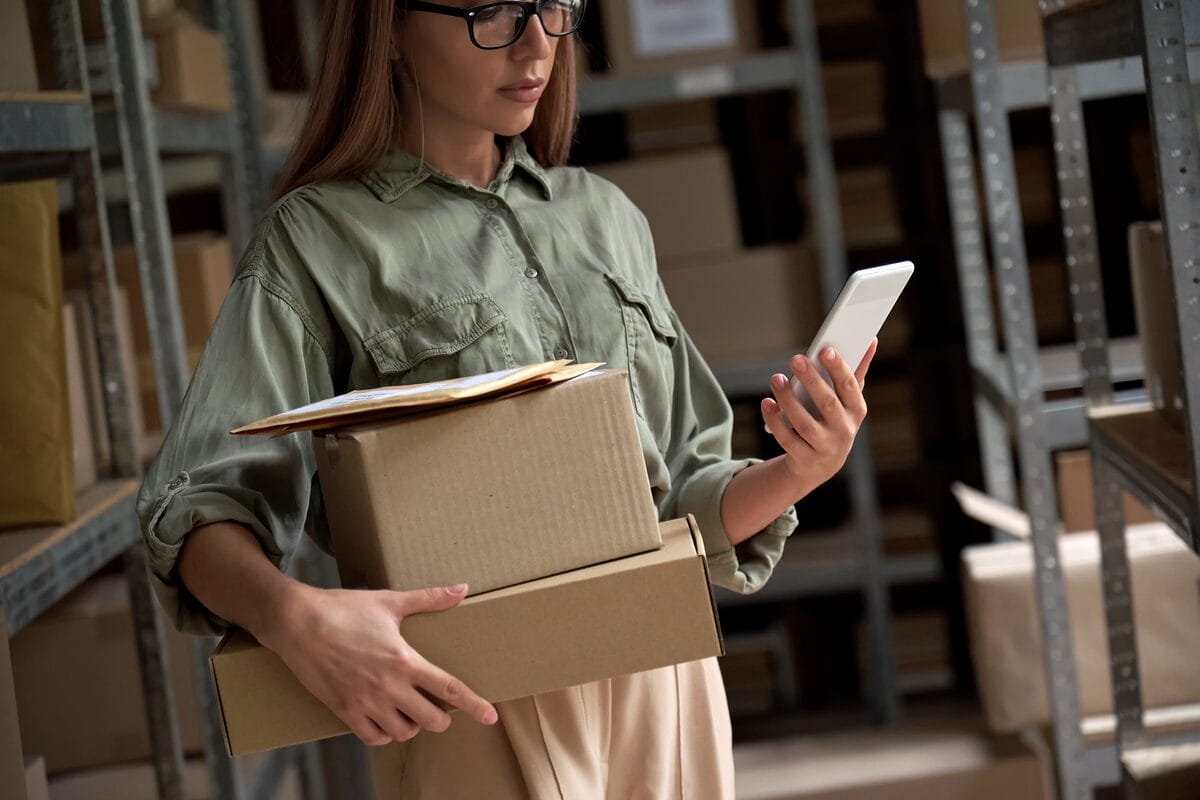
Suppliers are the backbone of both models, but your relationship with them works very differently.
In wholesale, you usually deal directly with manufacturers or authorized distributors. You buy large quantities simultaneously, often signing agreements or meeting minimum order requirements. This gives you more reliability and better per-unit pricing, but less flexibility if you want to switch products quickly.
Dropshipping, however, thrives on variety. You can connect with multiple fast dropshipping suppliers at once (on platforms like AliExpress or via an automation tool like AutoDS) to list hundreds of products without upfront commitments. The trade-off is that supplier quality and shipping times can vary, which makes vetting and automation tools key to keeping customers happy.
📦 In summary: wholesale builds strong supplier ties, while dropshipping gives you the freedom to test and pivot anytime.
Competition
When it comes to competition, both models play by very different rules.
Wholesale sellers often face brand-based competition, since they’re usually reselling name-brand products that other merchants also carry. On platforms like Amazon, that can mean sharing the same product listing and fighting for the Buy Box. To make matters tougher, many manufacturers also sell directly to consumers, making it almost impossible to outprice them.
Dropshipping, meanwhile, tends to be less competitive at the product level. While some dropshipped goods come from known brands, most are generic products you can rebrand as your own, giving you freedom to stand out. However, competition still exists, especially if many sellers list the same supplier items. The smart move? Use unique product imagery and strong branding to make your listings pop.
⚔️ In a few words: wholesale limits your rivals but pits you against strong players, while dropshipping opens the field but rewards creativity and speed.
Product Quality Control
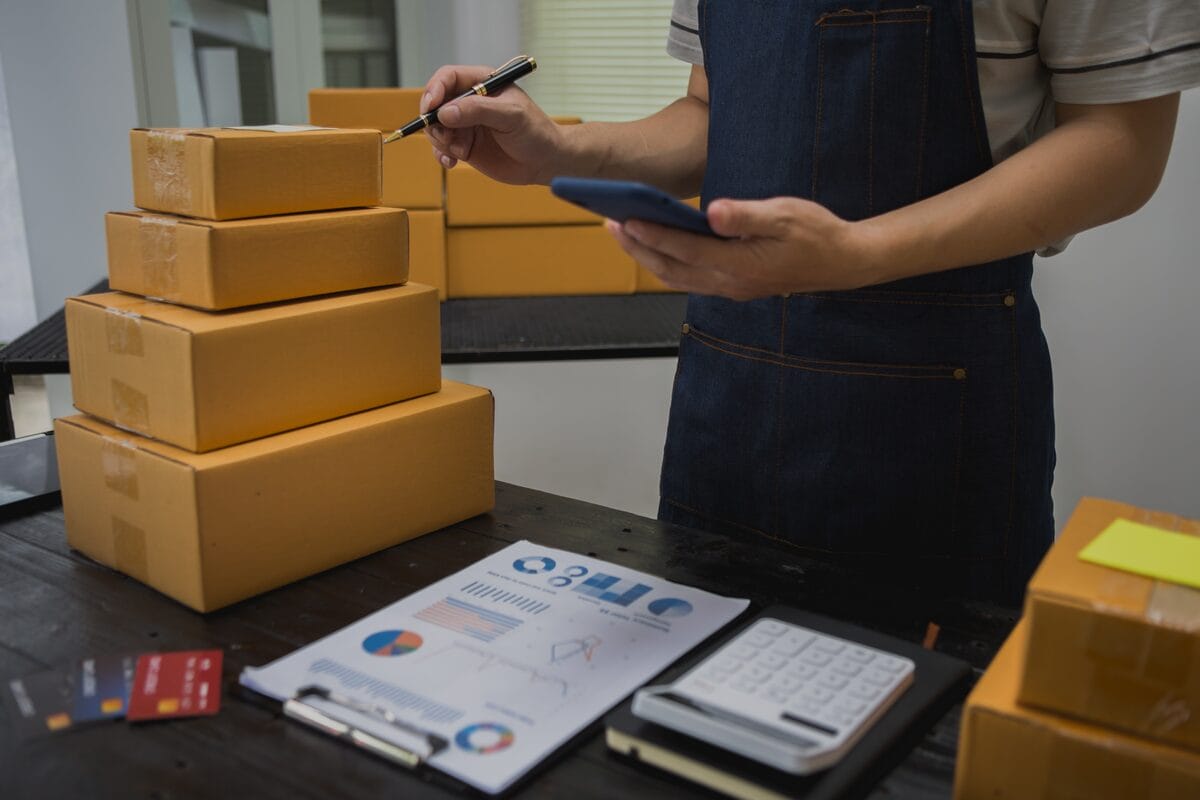
Quality control is one of the biggest trade-offs between wholesale and dropshipping.
With wholesale, you buy inventory upfront, which means you can inspect, test, and package the products yourself (or through your warehouse). This level of control ensures consistent quality and fewer surprises for your customers, but it also requires storage space and more hands-on management.
Dropshipping flips that dynamic. Since you never handle the products, you rely entirely on your supplier for quality assurance. Most suppliers do a solid job, but occasional inconsistencies can happen. The best way to reduce that risk is to order samples, read supplier reviews, and partner only with trusted sources.
Platforms like AutoDS help with this by connecting you to vetted suppliers and tracking product performance in real time, so you can quickly remove or replace low-quality listings before they hurt your store’s reputation.
✅ When it comes down to it: wholesale gives you direct control over quality, while dropshipping gives you smart control through automation and supplier insights.
Tools for Automating the Business

Here’s where dropshipping really takes the lead: automation. While wholesale relies heavily on manual work (from restocking to shipping coordination), dropshipping offers a huge advantage through smart tools that handle most of the heavy lifting for you.
That’s where AutoDS comes in. This all-in-one dropshipping platform is designed to automate every repetitive task that slows you down, so you can focus on strategy and growth instead of endless admin work.
With AutoDS, you can:
🌟 Import products from top suppliers with just one click.
🌟 Automate price and stock updates in real time to stay competitive and avoid overselling.
🌟 Fulfill orders automatically, saving hours of manual processing.
🌟 Run A/B tests and adjust pricing rules to optimize your profit margins.
🌟 Manage multiple stores from a single dashboard: no tab chaos, no data mess.
🌟 Track performance and analytics to spot trends and improve decision-making.
Wholesale sellers often need to handle these tasks manually or through multiple disconnected systems. Dropshippers using AutoDS, on the other hand, get a seamless, data-driven setup that keeps their business running even while they sleep.
Ultimately, automation is what turns a dropshipping side hustle into a scalable, time-efficient business model.
💬 “It’s going to give you everything that you need to make sure your business is flowing smoothly,” says AC Hampton about AutoDS — and that’s exactly what it does! Start your 14-day trial for just $1 and let its automation handle pricing, stock, and order fulfillment so you can begin your dropshipping journey effortlessly.
Which Method Is Best for You?
At the end of the day, the right choice depends on your goals, budget, and how hands-on you want to be.
If you prefer control, higher margins, and don’t mind managing stock or logistics, wholesale might fit you better. But if you want to start lean, test products fast, and scale with automation, dropshipping gives you the flexibility and lower risk to do just that.
Platforms like AutoDS make dropshipping even more efficient, turning complex, time-consuming processes into simple automated workflows that help you grow faster and smarter.
| Feature | Dropshipping | Wholesale |
|---|---|---|
| Start-up Capital | Low – minimal upfront investment as you only purchase after sales | High – requires upfront investment to buy inventory in bulk |
| Inventory Storage | Not needed – supplier handles storage and fulfillment | Needed – store products at home, warehouse, or fulfillment center |
| Suppliers | Multiple suppliers possibility; flexible and scalable, can test many products | Usually manufacturers or authorized distributors; long-term agreements and bulk orders |
| Competition | Generally lower; generic products can be branded uniquely, but popular items can still be competitive | High for name-brand products; compete with other resellers and sometimes the manufacturer |
| Product Quality Control | Limited control – rely on supplier quality, but can mitigate with careful selection, reviews and tools | Full control – you inspect and handle all products before shipping |
💡 Pro Tip: Don’t be afraid of trying a hybrid model: stock your fast movers in bulk for bigger margins and test new, experimental products via dropshipping.
Frequently Asked Questions
What is the main difference between dropshipping and wholesale?
The main difference between dropshipping and wholesale lies in inventory management. Dropshipping lets you sell products without holding stock (your supplier ships directly to customers). Wholesale, on the other hand, requires buying products in bulk and managing storage, packaging, and fulfillment yourself.
Which is more profitable: dropshipping or wholesale?
Profitability in dropshipping and wholesale depends on your strategy. Dropshipping has smaller margins but minimal startup costs, while wholesale demands more investment yet can yield higher profits per sale once you scale.
Which model is easier for beginners: dropshipping or wholesale?
Dropshipping is generally easier for beginners because you don’t need to handle inventory, warehouses, or shipping logistics. Wholesale takes more capital and planning, making it better suited for experienced sellers ready for larger operations.
Can I combine dropshipping and wholesale in one store?
Yes, you can combine dropshipping and wholesale in a single store. Many sellers mix both — using dropshipping to test new products and wholesale for proven best-sellers — balancing flexibility with stronger profit margins.
Start Your Dropshipping Journey with AutoDS
So, you’ve explored the key differences between dropshipping vs wholesale: from start-up costs and inventory headaches to suppliers, competition, and automation tools. Now you know which model fits your goals, minimizes risks, and sets you up for long-term success. Pretty handy, right?
The great news? Tools like AutoDS make dropshipping a total breeze. AutoDS automates product sourcing, pricing, stock updates, and order fulfillment, so you can focus on growing your store instead of juggling tedious tasks. With these features, AutoDS acts as the ultimate sidekick for dropshippers who want to save time, stay efficient, and boost profits without breaking a sweat.
Don’t sit on this info too long. The sooner you put it into action, the faster you can ride the wave of trending products, manage multiple stores, and prepare for busy seasons. Time’s ticking, and every day counts when scaling your store.
🚀 Ready to simplify dropshipping and maximize your results? Start your 14-day trial for just $1 with AutoDS and launch your store with confidence today!













